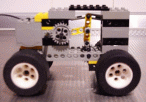
March 2008. In this project I have tried (for the second time) to reproduce the Torque Converter, invented by George Constantinescu in 1923, as a way to achieve continuous variable transmission ( CVT ) for LEGO cars. A beautiful paper about this man and his inventions has been published by Ian Constantinesco This is still the most important paper and most other websites, like Wikipedia, refer to this one.
The basis idea is to get a transmission that adapts automatically to the load of the motor by changing the transmission to an optimal value between zero and full speed. In the orginal concept a pendulum with a weight is used.The motor keeps the pendulum swinging. The pendulum drives a ratching mechanism that transmits torque to the wheels if the pendulum moves in the right direction.
The first time that I tried to built a LEGO demonstration of this device as an example of a ratcheting CVT was in 2004. A that time I tried to replace the pendulum weight by strings, and it didn't work very well.
Someone on the web, Samuel A. Falvo II, send me an email with comments about this design (the configuratoin with the springs does not behave like a pendulum) , and therefore I decided to try with a copy of the original design that is as similar as possible. The first version is shown in the following 2 pictures.
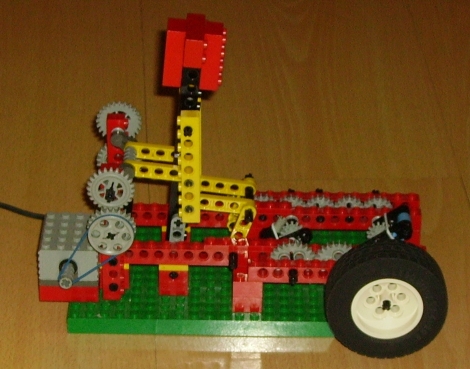
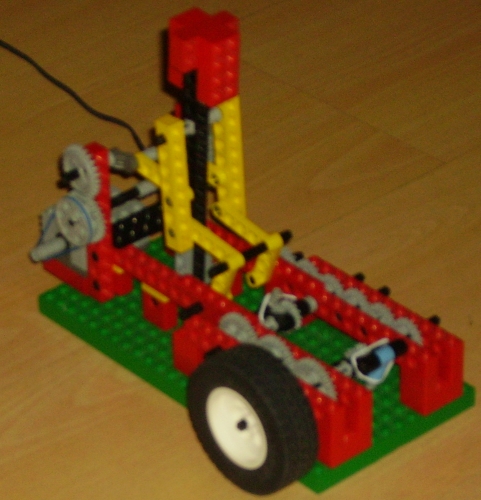
The pendulum is upside down like in the first realization of Constantinescu in 1923, (US patent 1613344, jan 4, 1927). In this design I have used the one-way clutches that were designed by Pete Peterson. However, this version didn't work very well. The movement of the pendulum appeard to be too chaotic and the cluthches appeared to be not strong enough.
Therefore, I started with a new design of the clutches.
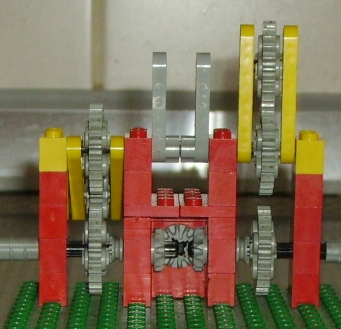
The left yellow arm is lifted up for this picture, but should be down in the forwards direction.
Then I decided to use a pendulum with a weight at the bottom . In this design I have used two heavy LEGO ballast blocks for LEGO ships.
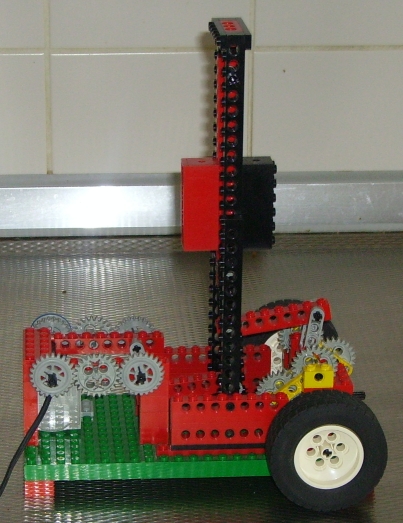
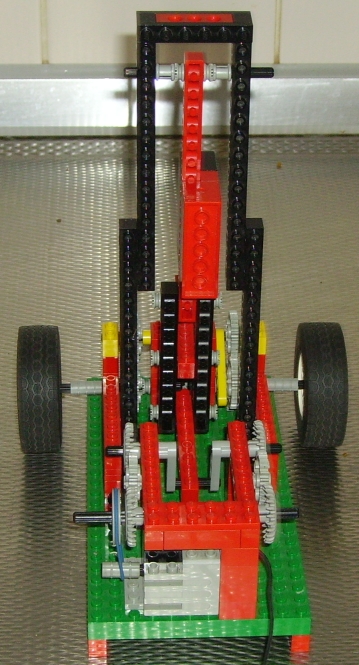
The working could be demonstrated by putting some weight on one of the wheels and removing it again. I have recorded a movie of this demonstration that can be downloaded here. . For the comparison between working with and without a load on the wheel, I have converted small fragments of this movie into GIF-animations that are shown below.Although the swing movemnets of the pendulum look similar, there is a clear difference between the horizontal movements of the red beam that drives the clutches. The wheel rotates much faster without a load.
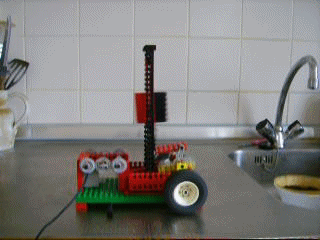
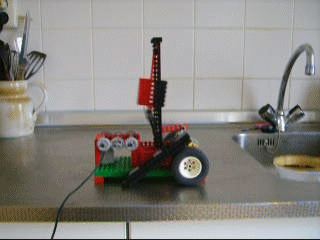
At this moment, I don't know what should be changed to make it work in a LEGO car. Therefore, I welcome comments, suggestions and preferably, examples of designs that work better!